Spring storms bring rain, snow, and wind to the ranch along with a fall-out of what the naturalist, Peter Matthiessen, calls the "wind birds". Wet, flooded fields on and near the ranch provide feeding grounds for shorebirds and marsh birds. Some, such as Willets, Marbled Godwits, White-faced Ibis, and Lesser Yellowlegs are just passing through on the way to their breeding grounds. Others, such as Wilson's Snipe and Kildeer stay for the season and breed and raise their young on the 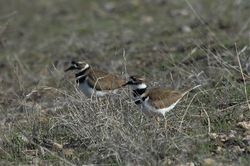
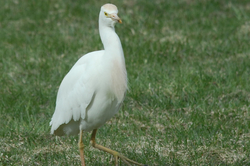
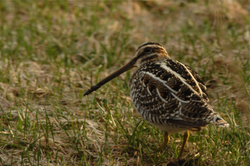
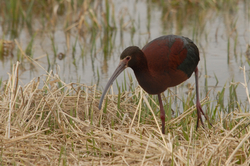
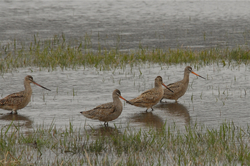

ranch. Still others, such as Long-billed Curlew,
Cattle Egret, and Long-billed Dowitcher are vagrants- unexpected, out-of-range visitors who have blown off or strayed from their usual migration route.
-Kildeer pair nesting on the ranch
Last spring we briefly hosted a beautiful, but bewildered Cattle Egret in full breeding plumage.

In early April of this year, I arrived home after the best ski day of the season (thanks to a storm that delivered a foot of champagne powder to the ski mountain) and was greeted by a total of 14 Wilson's Snipe scattered around the ranch.

Earlier this week, after a wind storm of epic proportion, a flooded field across from the ranch was teeming with "wind birds"- 11 White-faced Ibis, 131 Marbled Godwits, 4 Willets, 2 Lesser Yellowlegs, and a single Long-billed Dowitcher. The ibis and godwits hung around for a few days before taking off, allowing me the opportunity to observe and photograph them.

The White-faced Ibis is a funny-looking creature with his long legs and his long decurved bill that he uses to probe in the mud for worms, insects, and snails. The "white-face" in his name consists of white feathers along the border of the bare facial skin of adults birds. The white is difficult to see except at close range, but the metallic bronze plumage on the body of the bird knocks you out, especially in just the right light.
When the Marbled Godwit is standing still or foraging

for bugs, his long, slightly upturned bicolored bill is my favorite feature. The flock seems to
enjoy socializing while they eat. When I was observing them late in the day, a pair of Red-tailed Hawks flew overhead and startled the birds into flight. As they took off, the bright cinnamon-buff of their underwings absolutely dazzled me.
The Marbled Godwits, like many of the "wind birds", stay for such a brief time that I consider their appearance on the ranch in the spring a highlight of the season.
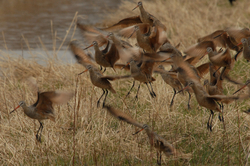

Leave a comment